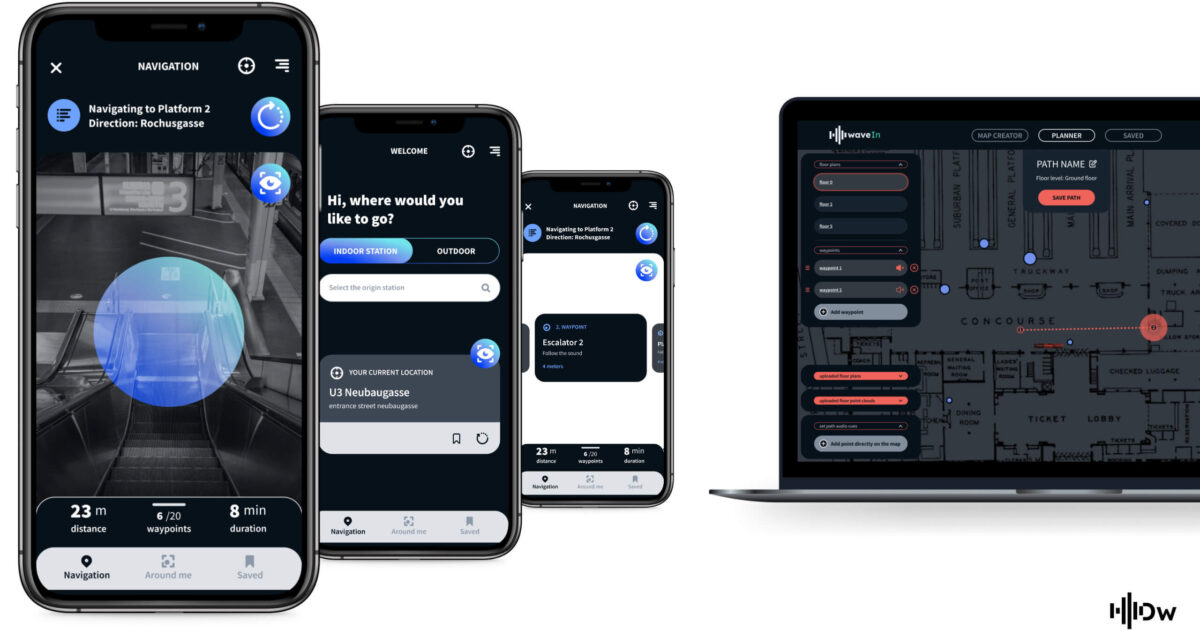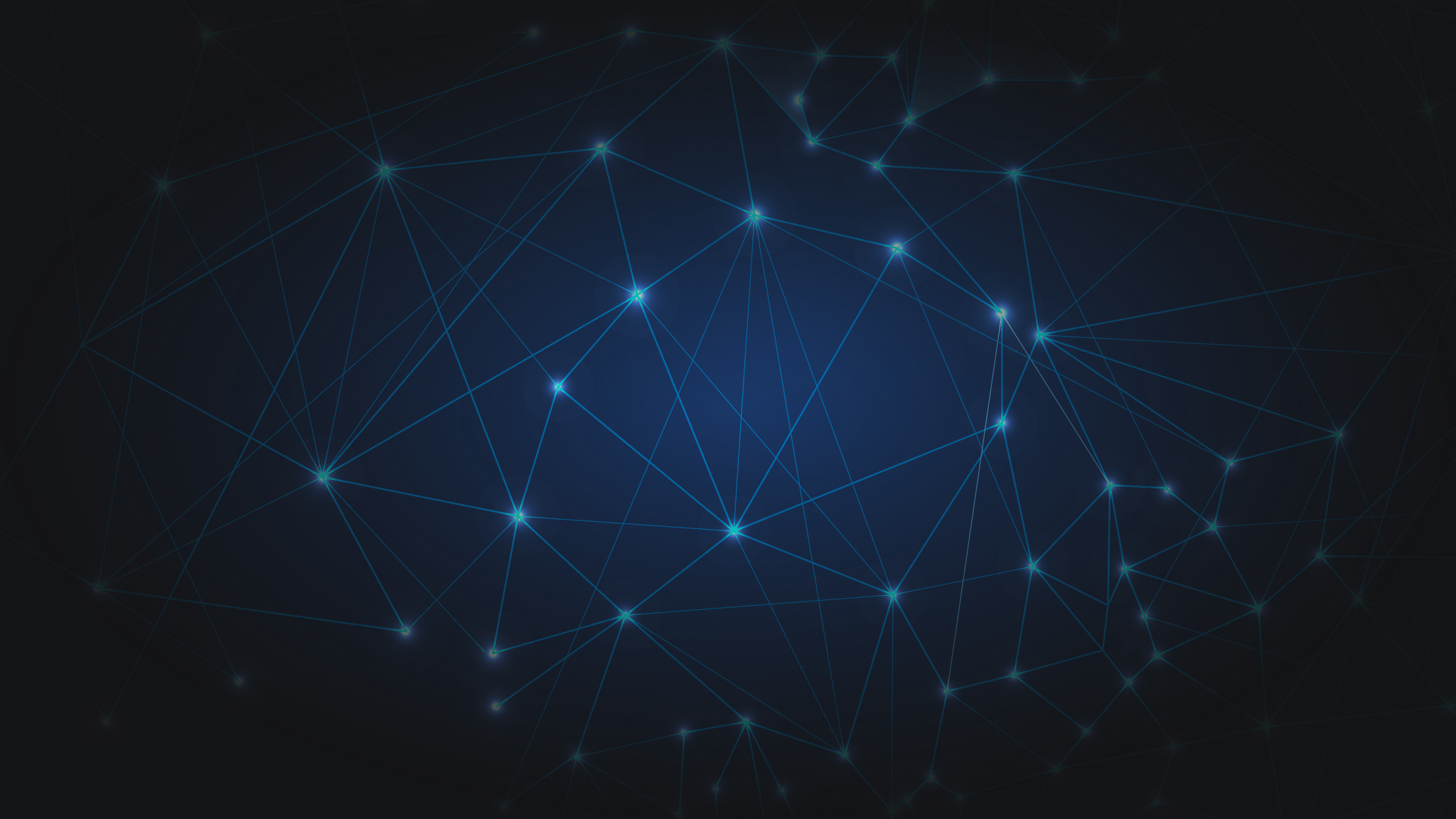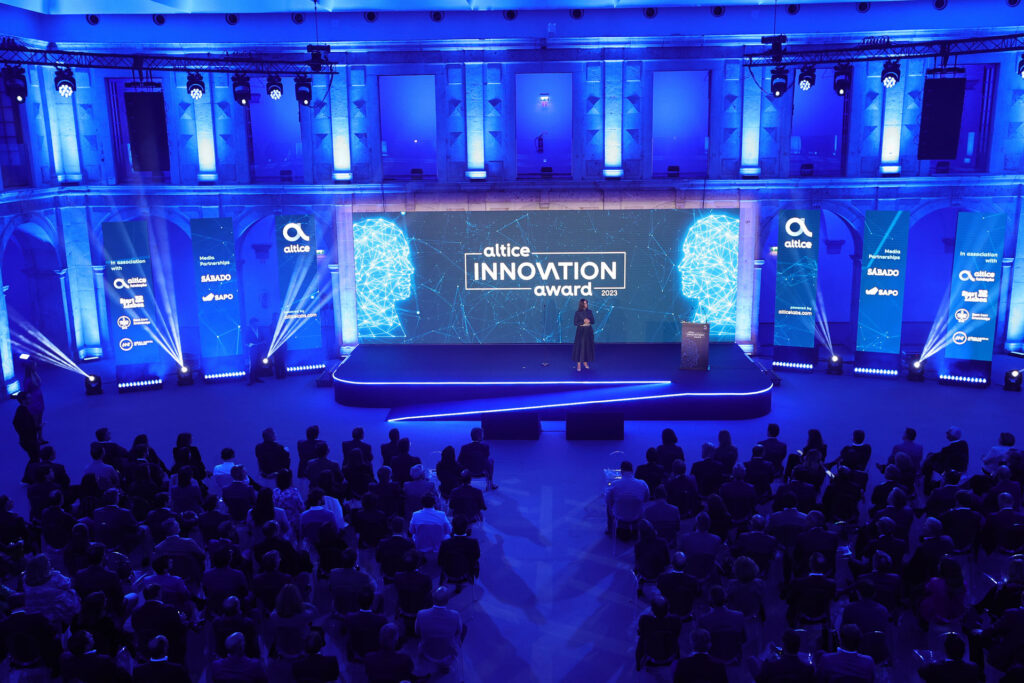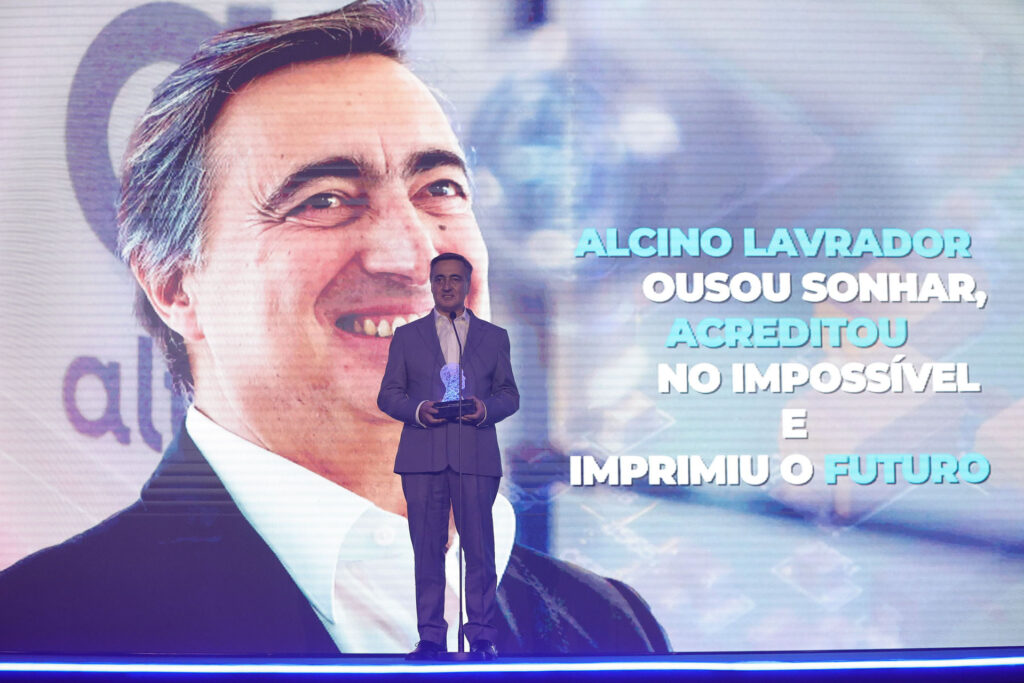To simulate real-world audio, the waveOut app uses spatial audio (3D audio), allowing users to naturally understand the direction of sound without the need to learn a new skill.
Developed by the startup Dreamwaves, the app was initially intended for people with visual impairments. During its development, the company realized that waveOut could also be used by the elderly, cyclists (who need to focus on the road rather than the screen), and tourists who can follow a predefined route and listen to 3D audio content about the city or space they are visiting.
WaveOut is available in English, German, and Portuguese and can be found on the App Store and Google Play Store. We spoke with the CEO of this Austrian startup, based in Vienna, Portuguese entrepreneur Hugo Furtado, to explain how this tool works and to understand the significance of winning last year’s Altice International Innovation Award in the ‘Inclui by Fundação Altice Portugal’ category.
This system requires minimal attention, allowing users to stay attuned to their environment, thus minimizing confusion and potential accidents.
How does spatial audio technology work in the waveOut app?
When an object emits sound in the real world, it’s easy to determine the object’s location. This is how we locate our ringing phone. It happens because sound waves change as they pass through our head, torso, and especially our external ears. These changes (filtering), modeled by head-related transfer functions (HRTFs), depend on the direction. Consequently, the sound that reaches each of the two ears is slightly different, depending on the direction. It arrives at slightly different times and with different filtering. In the virtual world, we use binaural virtual audio (or simply spatial audio) to simulate real spatial sound. When using headphones, binaural virtual audio reproduces in each ear the same sound that would be heard with an object in the real world, creating the illusion that a virtual object truly exists. Users can follow virtual sound as intuitively as they would follow real sound.
What are the key features that make waveOut unique compared to other navigation apps?
Our innovative technology provides a 3D audio navigation experience, harnessing our innate directional auditory abilities for non-visual guidance. This system requires minimal attention, allowing users to stay attuned to their surroundings, thus minimizing confusion and potential accidents. Users navigate effortlessly, as if they were following a friend’s voice. Additionally, our advanced location technology ensures precise and timely guidance, optimizing users’ time and energy. Even without the phone turned on or camera data processed, we can accurately guide users to their destination.
How long did it take to develop waveOut from the initial idea to launch?
It took approximately three years from the initial idea to the first release. But in the beginning, we didn’t have a team; we were working full-time jobs elsewhere. Then, in 2020, the Covid-19 pandemic hit. We can say that the app’s development took about a year.
What are the advantages of using spatial audio in navigation?
The major advantage is the intuitive understanding of the direction to follow. With audio instructions, a person always has to think, ‘left, right, 100 meters.’ It always requires some mental effort. With spatial audio, it’s different. A person listens, and immediately, the reaction is to orient themselves toward the direction from which the sound is coming. Once again, that’s why it’s such a commonly used ‘method’ for finding a phone that we can’t locate.
What was the inspiration behind the development of the waveOut app?
The motivation came from two passions of mine. The first is augmented reality. I did my Ph.D. in visual augmented reality, which helped surgeons perform closed-chest heart surgery. We turned a very challenging task into an easy one, allowing surgeons to see something inside the body that they couldn’t normally see. For me, this was a revelation about how digital content can be used in the real world to simplify tasks. My other passion is sound. I love music. I started doing sound design for photos and films, recording bands, and at some point, I thought, ‘What about audio augmented reality?’ It was the perfect combination of my two passions. This was the motivation to start exploring the technology. And because I don’t like to do things just because, I started thinking about practical use cases. The idea of using audio augmented reality for navigation emerged, and from there, it seemed natural to apply it to blind individuals.
What are the key milestones in Dreamwaves’ journey?
The first step was creating a prototype to test whether people could follow a path blindfolded using only 3D sound. Once that was confirmed, we began building the business. We participated in an incubator, secured our first funding that allowed us to create the app, obtain a patent, and build a team to develop the complete navigation app MVP. Then we started testing with users, refining the design, and realized that we had an interesting technology for other companies, which led to our first revenue. With that, we changed our business model and started serving other business clients and partners, which is what we are doing today.
What challenges did you face during the app development process?
We faced technological challenges, design challenges, and market challenges. On the technological front, we are developing our own spatial audio and location technology, which in itself is a significant challenge. Designing an app for visually impaired individuals requires extensive user testing and careful attention to ensure the user interface is well adapted. We dedicated a lot of time and effort to this aspect. Regarding market challenges, as a startup, it’s very difficult to build a business case around what is seen as a niche market. Every accessibility-focused startup I know faces this problem. Designing a business case considering many other user groups has been a significant challenge (but ultimately very rewarding).

Is waveOut available only for mobile devices, or can it also be used on other types of devices?
Currently, it is only available for mobile devices. However, we have integrated it with other hardware platforms in the past, and in the future, we plan to integrate with motorcycle and automobile navigation.
Are there plans to expand the features of the waveOut app in the future? If so, what are they?
We are currently in an open fundraising round, and once that is closed, we plan to expand both our technical and commercial teams. We intend to hire three more people. In terms of developing new capabilities for the app, we are expanding waveOut to include waveIn, which means we are working on indoor navigation. We are working on a project with Vienna’s public transportation system to guide visually impaired individuals in metro stations. We plan to expand to any indoor space (museums, restaurants, shops, hotels) that wants or needs to make their space accessible to these customers or visitors. In the future, both waveOut and waveIn will have the ability to recognize obstacles and allow users to include their own information on the map, such as marking construction zones or closed streets.
Can you talk about the growth of waveOut’s user base in recent years? What were the main drivers of this growth?
In recent years, we have grown from a few monthly users to several hundred. Growth for this type of app is slow because there is significant competition in the navigation app space. However, digital marketing, presence at international events, and increased awareness and attention to augmented reality and spatial audio are accelerating our user base growth.
How are you collaborating with other companies or sectors to drive your growth?
Currently, we are primarily collaborating with municipalities. They aim to assist their citizens as much as possible and serve as an excellent channel to reach users. We also collaborate extensively with associations for visually impaired individuals. One area we want to enter is bicycle deliveries, where we can help couriers be faster and travel more safely.
The best feedback we ever received was from a user who is 100% visually impaired. They told us that using the app was a bit like seeing.
What is Dreamwaves’ future vision, and what are your plans to continue growing?
Dreamwaves’ vision is to become the reference for navigation. We believe that in the future, navigation will be non-visual, allowing our attention to be focused elsewhere instead of always looking at a screen. Furthermore, we believe that a significant portion of interaction with digital content will be through auditory/voice interfaces. Dreamwaves will play a pivotal role in this transformation.
Do you have plans to expand your presence to other countries? If so, what are the target markets?
Currently, we have clients in Austria, Portugal, and the United States. In the medium term, we want to strengthen our presence in the United States and enter the United Kingdom and Spain.
What were the most positive or surprising feedback you received from users?
The best feedback we ever received was from a user who is 100% visually impaired. They told us that using the app was a bit like seeing. They lost their vision when they were young and said that being able to always hear the exact place to go, anytime, was somewhat like the advantage that sighted people have, having a visual reference to follow.
How did you decide to apply for the Altice International Innovation Award?
I learned about the award through a contact, and it seemed perfect for us, especially because there was a specific category for inclusion.
Receiving the award helped us build a better reputation and trust, which is extremely important.
What was the significance of being recognized by this award?
It was quite significant. The Altice International Innovation Award is increasingly recognized (this year, I’ve seen mentions in various media I follow), and it’s good validation that what we’re doing has the meaning and impact we hope for.
What visibility has the award brought to waveOut?
The award greatly boosted our visibility in Portugal. Although our company is based in Austria, we have two people in Portugal, and we interact extensively with users and institutions in Portugal.
What has changed with this award?
Receiving the award helped us build a better reputation and trust, which is extremely important.
What advice would you give to competitors?
Above all, thorough preparation. Also, ensure that the person delivering the pitch enjoys and is comfortable with this type of event. It’s much better when it’s enjoyable as well!”












